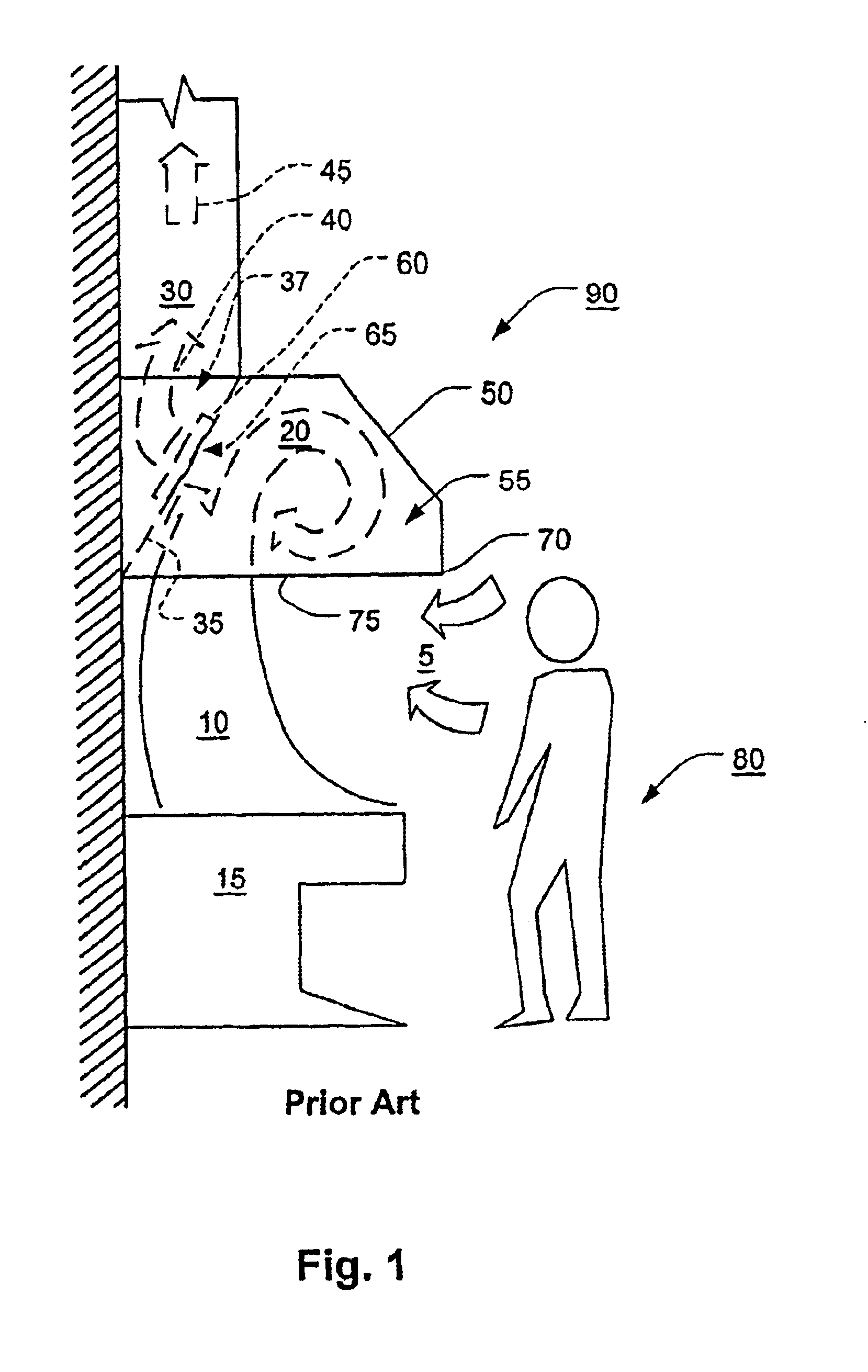Device and method for controlling/balancing flow fluid flow-volume rate in flow channels
a flow channel and flow control technology, applied in the direction of domestic stoves or ranges, heating types, separation processes, etc., can solve problems such as aerosol precipitation, and achieve the effect of minimizing steady and quasi-steady flow effects
- Summary
- Abstract
- Description
- Claims
- Application Information
AI Technical Summary
Benefits of technology
Problems solved by technology
Method used
Image
Examples
Embodiment Construction
[0083]Referring to FIG. 4, a kitchen hood 125 has a canopy 145 positioned over a heat / contaminant source 175 (such as a grill) to capture a thermal convection plume 170 produced by the heat / contaminant source 175. The canopy 145 defines a recess 140, having an access 155. An exhaust fan (not shown) draws a flue stream 105 through an exhaust plenum 180. Negative pressure in the exhaust duct 180 in turn draws gases residing in the recess 140 through a vent 130. In the vent 130 is a mechanical grease filter 115, set in a boundary wall 120 that defines part of the recess 140. The filter reduces the mass of suspended grease particles in the resulting flue stream. The grease filter 115 may be an impingement filter or one based on cyclone type separation principles. The thermal convection plume 170 carries pollutants and air upwardly into the canopy recess 140 by buoyancy forces combined with forced convection resulting from the suction created by the exhaust fan. A combined effluent strea...
PUM
| Property | Measurement | Unit |
|---|---|---|
| flow resistance | aaaaa | aaaaa |
| diameter | aaaaa | aaaaa |
| flexible | aaaaa | aaaaa |
Abstract
Description
Claims
Application Information
 Login to View More
Login to View More - R&D
- Intellectual Property
- Life Sciences
- Materials
- Tech Scout
- Unparalleled Data Quality
- Higher Quality Content
- 60% Fewer Hallucinations
Browse by: Latest US Patents, China's latest patents, Technical Efficacy Thesaurus, Application Domain, Technology Topic, Popular Technical Reports.
© 2025 PatSnap. All rights reserved.Legal|Privacy policy|Modern Slavery Act Transparency Statement|Sitemap|About US| Contact US: help@patsnap.com



